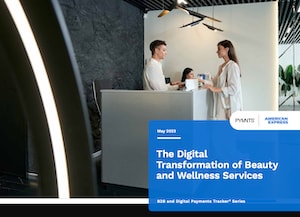August 09, 2021
How to Keep Going After a Successful Pivot: 3 Steps to Continuous Innovation

In the events industry, we’re used to contingency planning. In fact, we specialize in it, ensuring events run smoothly even when nothing goes as intended. Any event planner anticipates speakers to run late, content to need last-minute revisions and equipment to go missing—and they know exactly what to do when that happens.
Our approach to dealing with that reality comes from a commitment to an “unexpected is ordinary” mindset. Expecting change keeps us nimble, ready to roll with the punches as we bring our clients’ events to life.
But over two tumultuous days in March 2020, our commitment to that mindset was challenged. My company, Bluewater, lost 90% of the event work booked for the year. I remember seeing leadership standing in our warehouse, watching in total shock as the list of upcoming projects normally filling our roster disappeared. There was no contingency planning for a disruption of this magnitude.
Somehow, we found a way forward. We quickly embraced the reality of what was happening and committed to thinking that challenged the status quo. We resolved to continuously pivot, knowing that planning for the future meant looking at days and weeks instead of months and years.
Don't let perfect be the enemy of good.
The right solution is one you can roll out now.
As we hoped for events to normalize and business to slowly return, we’ve been able to stop, catch our breath and look back to see what worked, what didn’t and understand what we should continue doing moving forward. What we learned—the importance of everyone being familiar with the gravity of unexpected situations, the ability to stay calm and communicate and how to pull off a COVID-19 pivot even without the necessary expertise—could prove useful for many businesses trying to forge ahead.
A Plan for Survival
Our business is a collection of related services, which helped us diversify our offerings. If there were obvious opportunities to grow our business before COVID-19, we would have jumped on them. Finding new ways to drive revenue required us to take a hard look at what we do while considering completely new ideas.
Step one was breaking down areas of concern and assigning each one to someone in leadership to lead the charge. We also created a road map for the remainder of 2020 that we shared across the company. If our COVID-19 pivot was going to work in the months to come, everyone had to be invested.
Some of that plan was a natural extension of what we already did. For example, we’ve offered virtual events for years. These were typically branded streams that extended the reach of live events, and they were secondary to what happened on stage. Now, they’re the entire event. Part of our COVID-19 pivot involved leveraging our technological experience to build more engaging and accessible virtual events.
The other part of our pivot went in the opposite direction: into territories where we have less experience. For example, we worked with one of our partners to design ultraviolet sanitization products for use in high-traffic areas. As our team becomes more comfortable sharing new ideas, our company evolves in unexpected ways.
How to Keep Going After a Successful Pivot
The push for innovation, diversification and new revenue streams could persist long after COVID-19. Approaching these priorities systematically has helped us learn what’s working as we venture into the unknown. Here are some of the lessons we’ve learned that you can apply.
1. Innovation is everything.
Author Greg Satell says the core of innovation involves solving problems to create a better future—not just hastily fixing everyday challenges. My company wouldn’t have successfully pivoted without a culture of innovation that values new ideas and nurtures solutions. This helps us identify viable ways to continue pivoting, easing us through the inevitable setbacks involved in doing something different.
For many businesses, COVID-19 has been the catalyst for change that leaders were considering, but hadn’t acted upon. Before the pandemic, for example, Bluewater was a professional services organization using a cost-plus model. We’re now able to be more involved in partnership arrangements where we take on much of the risk but enjoy a greater share in the reward.
2. Speed—not perfection—wins.
We gave ourselves two months to rebound. No one expected us to reach 100% that quickly, but we wanted to have a plan and make progress. Our goal was to get ideas through to market even if they weren’t fully refined. We now believe speed is more important than perfection because waiting too long to roll out new products and services means more months with less revenue. Many of our new products are here to stay, although we continue to refine their business models and branding.
Minimum viable products (products that don’t necessarily have all the features or beautiful designs—and sometimes aren’t totally functional) might not be perfect, but they still deliver value. Don’t let perfect be the enemy of good. The right solution is one you can roll out now.
3. Trust your team.
To make it through the lean period, we had to furlough some of our employees. When we did that, we also made it clear when and on what terms they would return. In contrast, many companies fired people permanently via email with no indication of any next steps. Difficult decisions like these are still being made daily, but they don’t have to be cruel—and they shouldn’t be. When you pivot, do it in a way that respects everyone involved.
When things were at their worst, our leadership team didn’t know what the next move was—but we knew we could trust each other to figure it out. Trust in our team has sustained us through the moments where we question our decisions or confront complex problems. We attribute the trust in our organization to transparency: No matter the situation, leadership explains the logic behind important decisions, makes the stakes clear, outlines the broader strategy and owns up to mistakes. The sense of trust among all of us helps the company pivot smoothly and collectively.
The pandemic is ongoing, and my company isn’t completely out of the woods. Still, we feel more confident than we have all year. Each pivot is a step we take toward something new and exciting. When businesses challenge themselves to do things differently, they can reach new heights—even during uncertain times.
Photo credit: Getty Images








